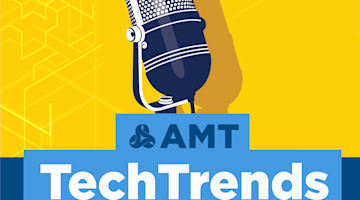While Jeffrey Immelt’s reputation has been somewhat tarnished by GE’s recent financial struggles, there’s no doubt that the industrial giant’s former CEO made remarkable progress during his tenure in embracing the concept of digital transformation in capturing the power of emerging technologies to create new business opportunities. GE is in the midst of some difficult changes today, but its commitment to digital is a critical success factor for GE moving forward in this rapidly evolving manufacturing world. Manufacturing Tech Council members saw clear evidence of this in the April webinar as a top GE researcher outlined how digital twins are improving product reliability, redefining manufacturing, and creating new revenue streams. These digital representations of physical assets like jet engines and wind turbines are a vital element of GE’s Digital Thread and its Industry 4.0 strategy.
Thus, it’s worth paying attention when Immelt speaks about digital transformation and the future of the manufacturing industry—which he’s done, along with co-author Vijay Govindarajan in an MIT Sloan Management Review article called “The Only Way Manufacturers Can Survive.” How’s that for a grab-you headline?
“Digital transformation is no longer optional for industrial companies. The problem is it’s really, really hard,” the authors begin. “… starting and sustaining a digital transformation in a manufacturing company? That’s tougher than managing any other change initiative – from total quality management, to Six Sigma, to lean manufacturing – and believe us, we’ve lived through or seen them all over the last three decades. Becoming digital is a requisite for survival today.”
Immelt and Govindarajan explain that digital transformation isn’t the same as “the digitalization of an existing business.” Rather, it’s about reimagining products and services as “digitally enabled assets; generating new value from the interconnection of physical and digital assets through data; and creating ecosystems that make that possible.” Immelt is candid in saying that GE didn’t wake up to the opportunities and threats of digital transformation until after a so-called “scouting team” learned that IBM and some high-tech startups were gathering data from GE’s customers to develop “novel data-based services in sectors such as aviation and power.”
The old adage is that you don’t hear the bullet that kills you and there’s a lesson in that for all companies, not just manufacturers. Accustomed to monitoring and measuring your company against traditional competitors and comfortable in your hard-won niche, you won’t see the threat from outsiders and emerging digital companies that are greedily eyeing your lucrative markets and valuable customers until it’s too late. (Think taxi and hotel companies, Uber and Airbnb.)
”Above all, CEOs should never lose their nerve. A digital transformation is a long-run strategy. Without consistent backing, it’s hard to execute. Business cycles come and go, but the future always lies ahead. CEOs should never need to apologize for investing in it.”
Immelt shares valuable perspectives on the problems that keep manufacturing companies from really committing to digital transformation—incumbency, talent, culture—and provides advice on how to make transformation a reality in your organization. (Hint: Without a fully engaged CEO, you’ve got some very tough sledding ahead.)
“Above all, CEOs should never lose their nerve. A digital transformation is a long-run strategy. Without consistent backing, it’s hard to execute. Business cycles come and go, but the future always lies ahead. CEOs should never need to apologize for investing in it,” the authors write. “If industrial companies don’t continue to invest in digital transformations, they will create markets that either industrial rivals or digital natives will seize without much fanfare. It’s crucial that they transform themselves today.”
This article offers hard-won wisdom that is recommended reading for management teams and individuals trying to drive awareness of digital threats and opportunities. The piece lives behind a paywall on the MIT SMR site, but nonsubscribers can read a few articles for free so give it a shot. Here’s the link:
Read and benefit.








